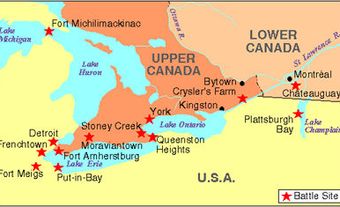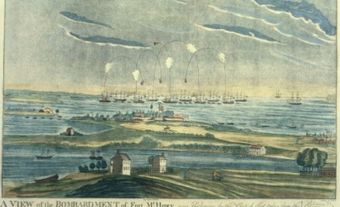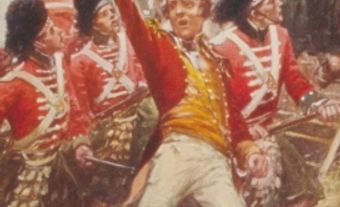Battle of North Point
The Battle of North Point, fought on 12 September 1814, was an early engagement in the larger battle for Baltimore during the War of 1812. A limited victory for the British, the battle allowed the Americans to bolster their defences in the region to ultimately thwart the larger British advance into Maryland.
Prelude to the Battle of North Point
Since March 1813, British naval forces under the command of Rear Admiral George Cockburn had positioned naval forces in Chesapeake Bay in order to draw US forces back toward defending the capital on the northeastern seaboard instead of pressing attacks into Canada. But the British were not content with naval operations alone. British Major General Robert Ross, a veteran of the Napoleonic wars, had taken a brigade of men who had served with Wellington in Europe, along with a battalion of Royal Marines, and together they had wreaked havoc on American forces and territory through the summer. He had defeated the hastily assembled forces raised in Maryland and the District of Columbia, and after victory in the Battle of Bladensburg, had burned Washington. Retiring to the Royal Navy ships, Ross and his men then made their way to Chesapeake and the strategically valuable port of Baltimore. On 11 September, Ross and forces of close to 5000 men landed at North Point, at the end of the peninsula. From here, they marched hard toward Baltimore.
The Battle
Anticipating this move, Major General Samuel Smith, the commander of the Baltimore militia, ordered American Brigadier General John Stricker to take his 3rd Brigade, the best trained troops under Smith's command, and give them the task of defending against the incursion onto American soil. Hearing that the British were only 5 km (3 miles) from his headquarters, Stricker prepared his defence between Bear Creek and Bread and Cheese Creek. With 2 regiments in front with 6 cannon, 2 regiments in support, and 1 in reserve, Sticker made excellent use of the terrain, with the woods providing cover and swamp and muskeg on his left that would make any British flank attack difficult.
On 12 September, the British stopped for a meal and Stricker pressed for a skirmish attack to draw them out into a better position. With 250 men, Major Richard Heath raised havoc with the British. Major General Ross, when he heard of the attack, rushed to order his men to hold ground instead of follow until they could get more support for the advance. Before he could command his men in battle, however, Ross was shot in the chest by a sniper's bullet. He handed command to Colonel Arthur Brooke, and died before the battle had truly begun.
Brooke reorganized his men and prepared his assault on the American position. The first stage was a rain of artillery fire and rockets launched to provide cover for the 44th Regiment to attempt a flank attack. Meanwhile, the main front of British soldiers held the line against a deadly and constant American artillery fire. This included cannon shot made up of broken metal, nails and scraps, a viciously improvised grapeshot. British artillery also hammered the American line. While the casualties grew, the 44th Regiment attacked on the flank, disrupting the American line and forcing them to break up. Stricker reorganized his men and maintained a line to fight muzzle to muzzle with the British for an hour as casualties mounted. As his men broke up, he commanded them in a fighting retreat and returned to Baltimore.
Withdrawal of the British Force
Brooke did not press his advance with the Americans. His forces had sustained more casualties than his American foe and as night descended he planned to wait until he heard word on the subduing of Fort McHenry in Baltimore Harbor. Brooke's hopes were dashed when the Royal Navy failed with its bombardment against the fort. The death of Ross, a hero of the Peninsular War, weighed heavily on the men who had lost a decorated commander. Nonetheless, Brooke steeled himself for an advance on Baltimore. His hopes would be crushed. There were an estimated 20 000-plus men in the militia, and more than 100 pieces of artillery. Still, Brooke prepared for a daring night attack against the defences at Loudenslager Hill, but required naval support to quiet the battery of guns at Roger's Bastion on the flank of his proposed attack. Rear Admiral Cochrane provided the support, but failed to silence the guns, and Brooke called off his attack. He and his remaining men withdrew.
The Battle of North Point was technically a British victory, since they forced the Americans to retreat. But the cost and failure to capitalize on Brooke's success made it a hollow victory. The British suffered 39 dead, and nearly 300 wounded, compared to the Americans' 24 dead and 130 wounded.

 Share on Facebook
Share on Facebook Share on X
Share on X Share by Email
Share by Email Share on Google Classroom
Share on Google Classroom




